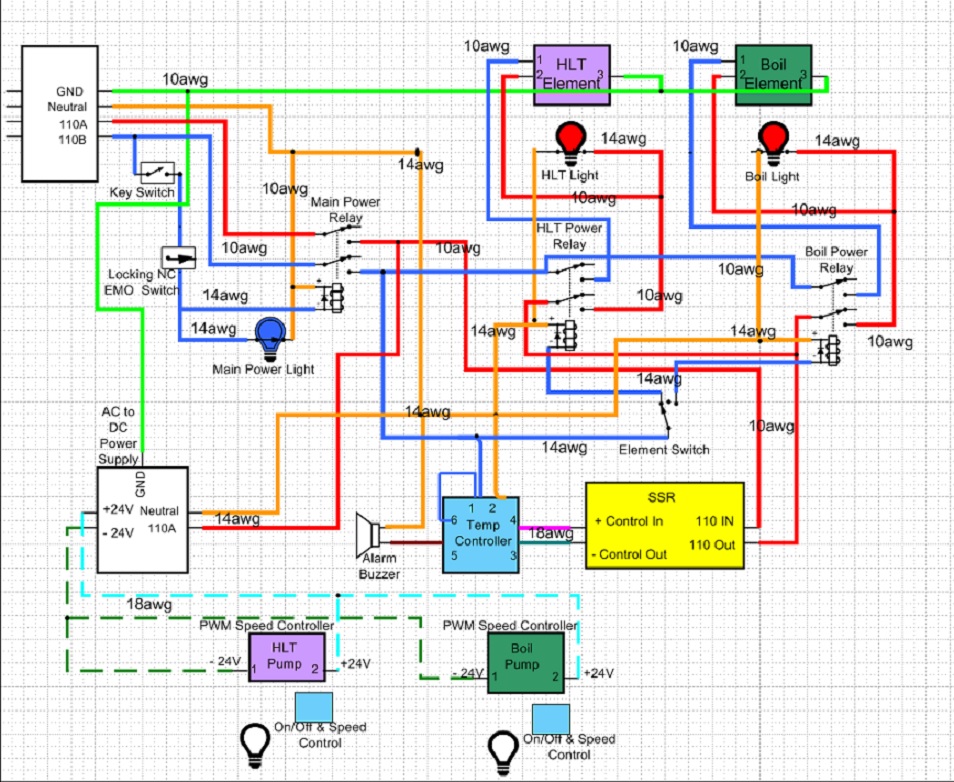Wolfairious
Well-Known Member
- Joined
- Jan 11, 2015
- Messages
- 101
- Reaction score
- 22
Finished up my electric brew controller. I plan on running 2 heating elements (never on at the same time). 1 in the HLT that is controlled with the temp probe + PID and 1 in the Boil Kettle that is controlled with the PID manually. Each element is on an outlet plug. Each 24V Pump is also on a plug after the PWM. The temp probe is also on a plug (I figure I could always plug a different one in to see temps in the boil kettle [even if it wasn't as accurate] to monitor cool down.)
I also figure if I ever wanted to, I could add a second PID and SSR easily enough when I goto HERMS. (I found some nice 90amp SSR for free)
Everything look wired correctly? (Not shown is a 1 amp fuse inline on the power to my PID.)
Thanks

I also figure if I ever wanted to, I could add a second PID and SSR easily enough when I goto HERMS. (I found some nice 90amp SSR for free)
Everything look wired correctly? (Not shown is a 1 amp fuse inline on the power to my PID.)
Thanks




